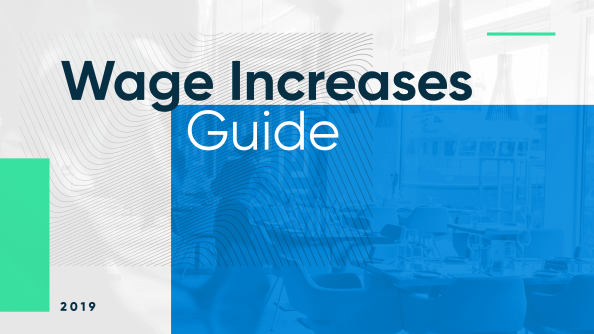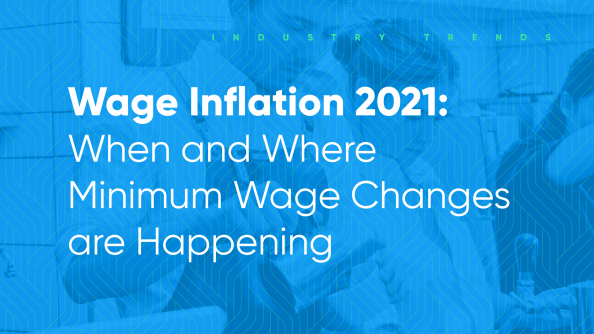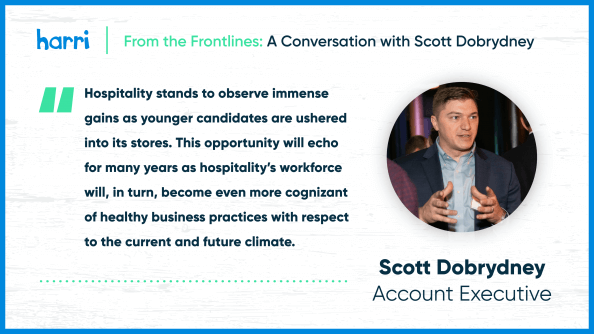Are you prepared for the overtime law changes?

- By Harri Insider Team | October 14, 2019
Planning schedules to reduce overtime is a difficult task at the best of times. It’s becoming even more important for restaurateurs to control OT as new overtime labor laws come into force on January 1, 2020.
The new regulations put a 50% increase on the salary threshold for employees eligible for overtime pay. The Department of Labor estimates that 1.2 million more workers will be eligible, with much of this added cost being taken on by restaurant operators.
Violation of overtime laws can result in a fine of $10,000 and even prison time for repeat offenders. Not to mention the rise in the wage bill if you get the scheduling wrong and have to pay time-and-a-half for several hours a week.
To make sure you’re compliant with the new law, let’s take a look at the specifics. First what the new threshold is and who is affected. And then some tips on how to reduce overtime using the latest technology available.
What exactly does the new law say?
The new regulations apply to salaried staff, including restaurant managers, assistant managers, executive chefs, office support staff and other managerial staff. Employees qualify for time-and-a-half pay for hours worked in excess of 40 per week, if their salary is under $35,568.
The previous threshold was significantly lower at $23,660. The increase of $12,000 in the threshold is small compared to what it could have been. A proposal by the Obama administration proposed to set it at $47,476, a near doubling compared to the current threshold, was blocked by a district judge in November 2016.
According to the Wall Street Journal, restaurant workers earned an average of $387 per week in July. The new overtime rules will increase the weekly threshold from $455 to $684. Employers can count non-discretionary bonuses and other performance-related incentives for up to only 10% of the employee’s total compensation.
The move has been welcomed by the National Restaurant Association, which states that it brings much-needed clarity for restaurants while putting more money in employee’s wallets.
But the changes also pose a number of challenges to restaurant operators. Scheduling and predicting peak times is a tricky task. And juggling the wants and needs of a diverse staff while trying to comply with strict labor laws can be overwhelming.
We’ve put together some top tips to help you deal with the changes by digging into your data to produce better scheduling and happier employees while reducing costly overtime hours.
How to prepare for the change
To stay on top and optimize your pay structure and schedules you need accurate data and reporting tools. Here are some tips to stay on top of overtime and prevent a huge wage bill, or worse, a fine for non-compliance.
How to reduce overtime spend
The more skilled your staff are across multiple areas, the more agile you can be with scheduling. Investing in cross-training for even a small number of employees can make a big difference.
Having versatile staff on hand to cover when things get tight can mean you avoid asking other employees to work double shifts. Thus making everyone a little happier and avoiding overtime hours.
Giving employees a broader skill set is also beneficial in general and is a great way to prepare staff for management roles, where it always helps to know how to work different aspects of the restaurant.
Take on temporary staff
If overtime is becoming a problem at peak seasonal periods, it may make sense to hire seasonal workers to cover the increased demand. Although it’s often more expensive to hire temps in terms of added training and inflated hourly wages, given the overtime laws, it may make more sense.
This is an area where looking at the data is key. A quick calculation will tell you whether hiring a temporary member of staff to fill in say 10 hours a week, would be cheaper than paying that much in overtime hours.
Talk to your staff
Going back to basics, the best way to manage effectively is to be able to openly communicate with your staff. Hold regular one-on-one meetings and be generally available to talk to employees about their concerns.
You may discover that certain people are unhappy with their workload, while others are happy to take on more. Or you could discover who is not pulling their weight during busy periods. Taking the anecdotal evidence coupled with raw data on staff costs gives you a solid foundation on which to make strategic decisions about pay structure and schedules.
Optimize schedules
Staying on top of schedules and keeping them well organized is a top priority in reducing unexpected overtime. This is partly down to good management. Knowing the business and knowing the demand.
It’s also improved and made easier by technology. Harri’s Wage and Hour Compliance Engine is designed for this exact purpose. It allows you to set the parameters for each employee to ensure compliance with labor laws.
You can easily adjust a number of these parameters including the weekly overtime threshold and the spread of hours, and the system produces an optimized schedule for you.

Consider changing your pay structure
You know how important it is to keep your best staff happy. It may be worth considering a pay increase to take salaries above the new overtime threshold. Many employees will be happy to work extra hours in exchange for the security of a higher salary.
On the flip side, keeping some employees to a strict 40-hour workweek could improve morale and mindset while increasing loyalty. As we discussed earlier, it’s important to talk to your staff and find out what works best for them. Ultimately, if they’re happy, they will be more productive and you will see improvements in every aspect of the business.
And if you can optimize your pay structure to get the best out of your staff while also making it cost-effective, it is a win-win.
As part of a suite of integrated performance, attendance and analytics tools, Harri has developed a real-time labor and sales reporting tool to help you optimize your pay structure, among other things.
The smart technology tracks sales, labor costs and figures like average spend by guest, and compiles the relevant data into concise reports to give you all the information you need at a glance.
On top of that, it tracks key employee performance metrics so you can make strategic decisions about your pay structure and the optimal pay package for each employee.
Stay on top of overtime law changes with smart scheduling, analytics, and reporting tools
Harri’s intelligent scheduling and data reporting systems give you all the data you need in an easily digested form allowing you not only to comply with the minimum legal requirements but also to make strategic decisions.
Once you have the system in place, you should see the immediate benefits of the cost savings from optimizing your scheduling and pay structure. And as labor laws continue to change, you will be ready to adapt and optimize further in the future.
To find out more about how these tools can improve your bottom line, request a demo today.




















